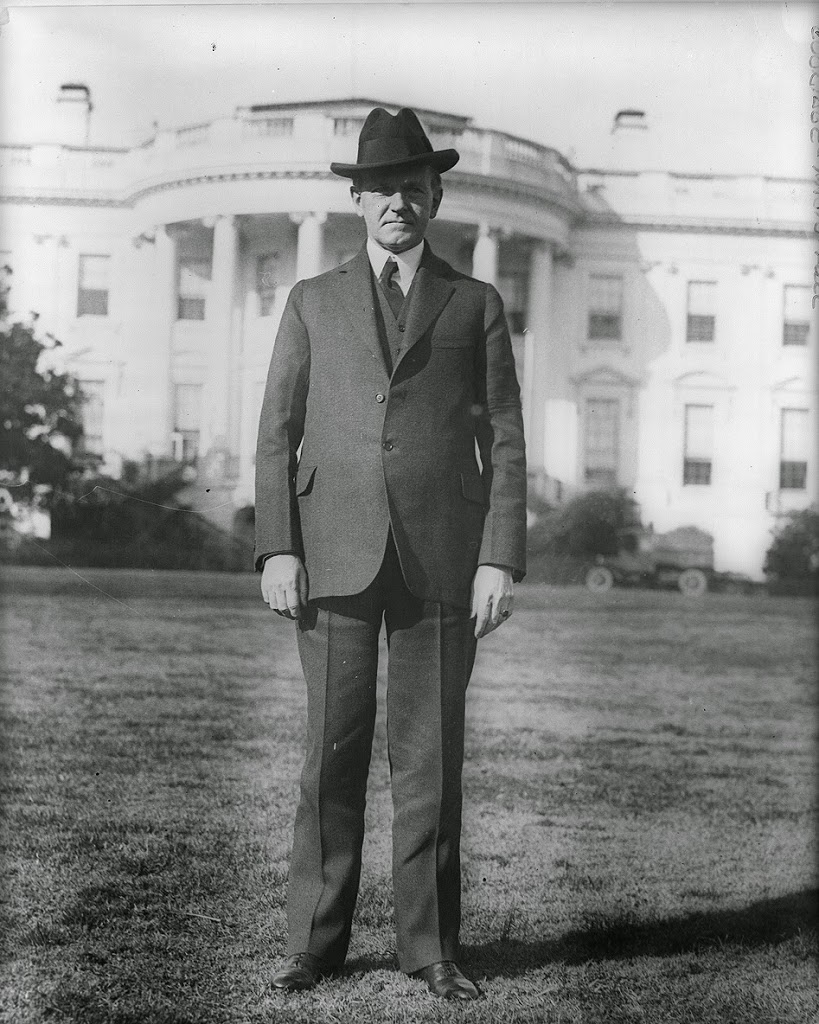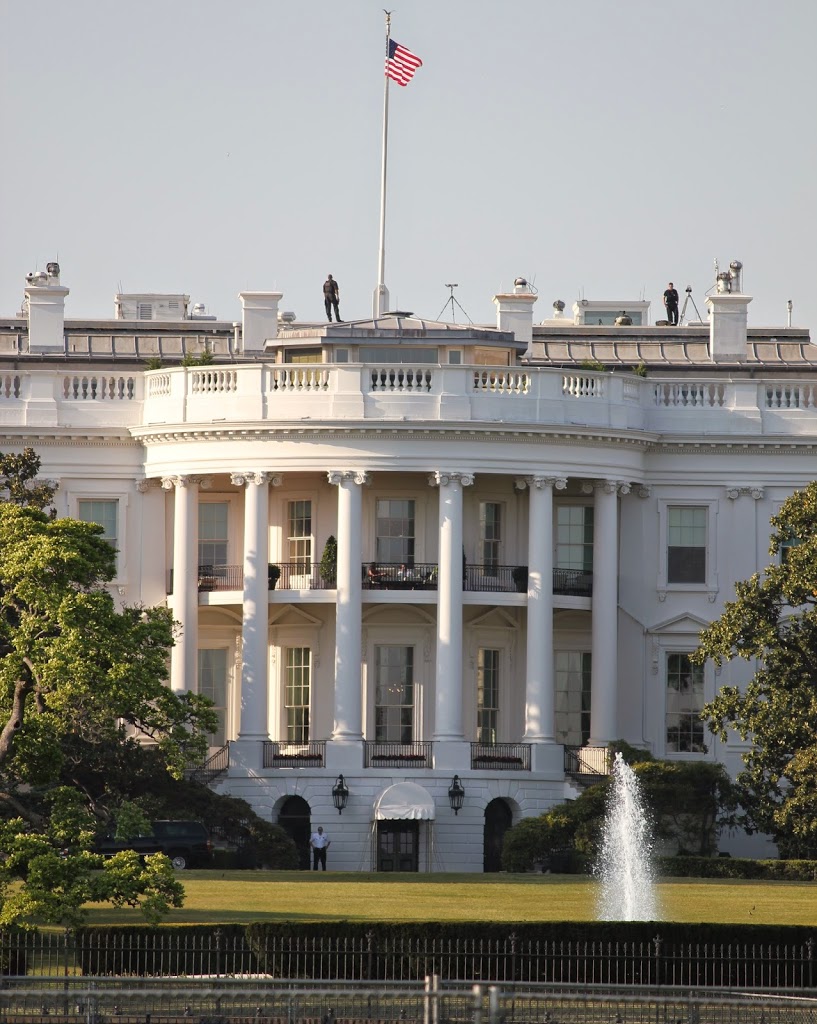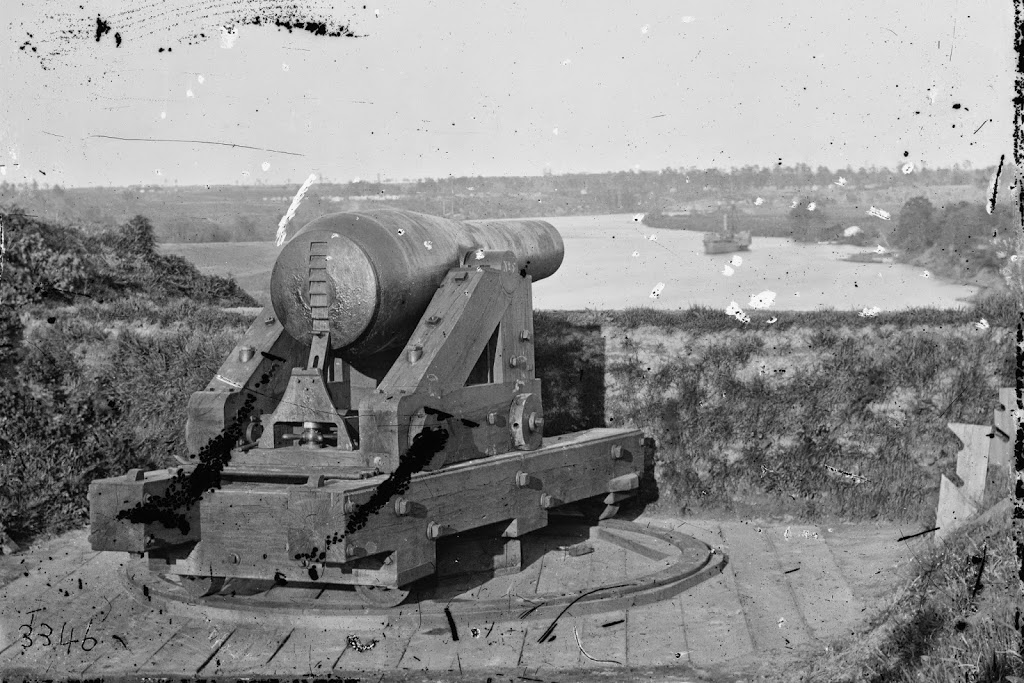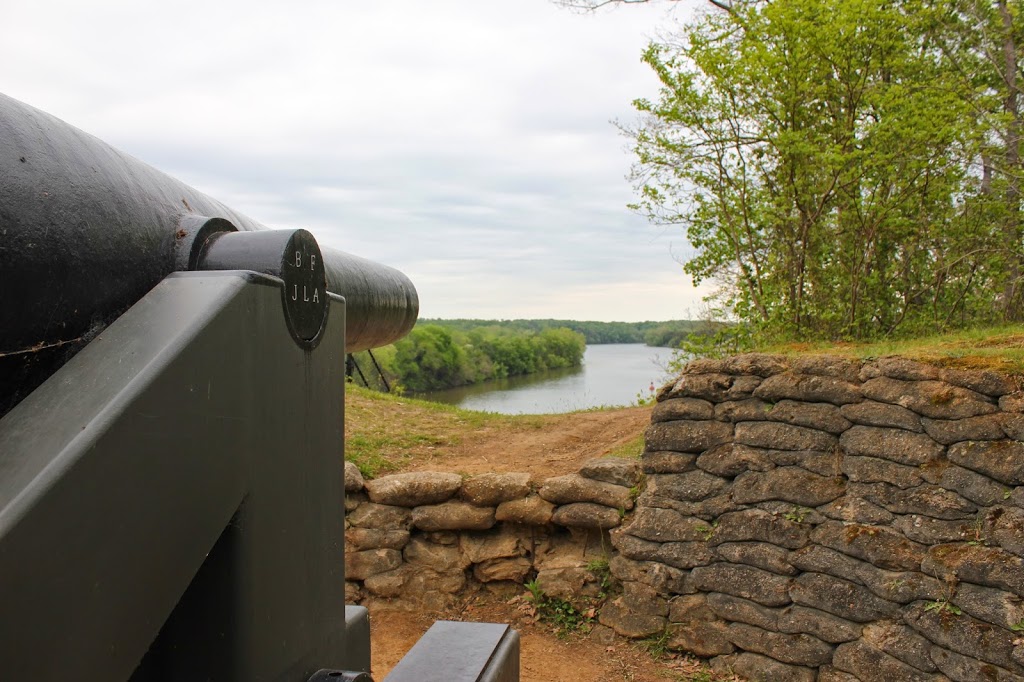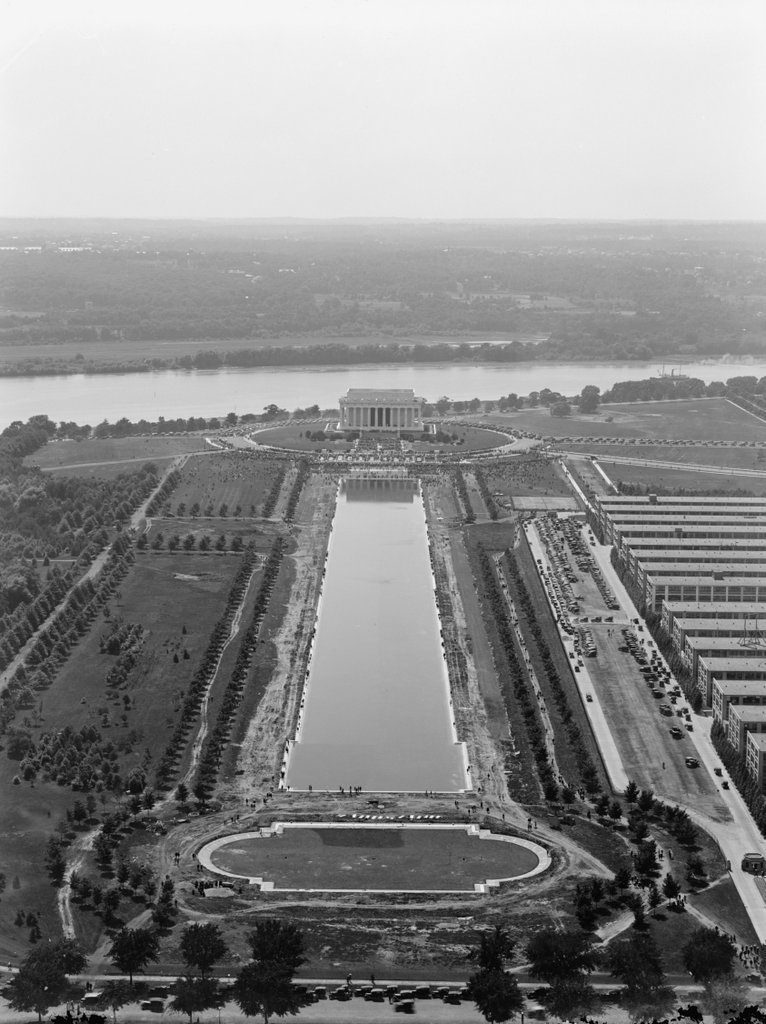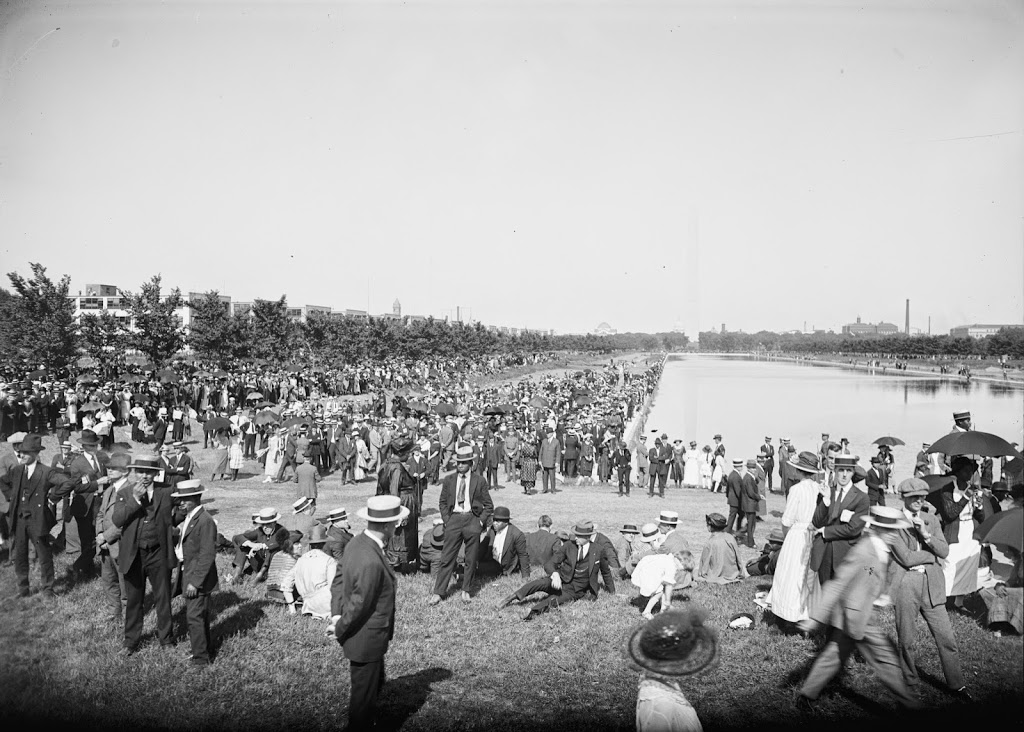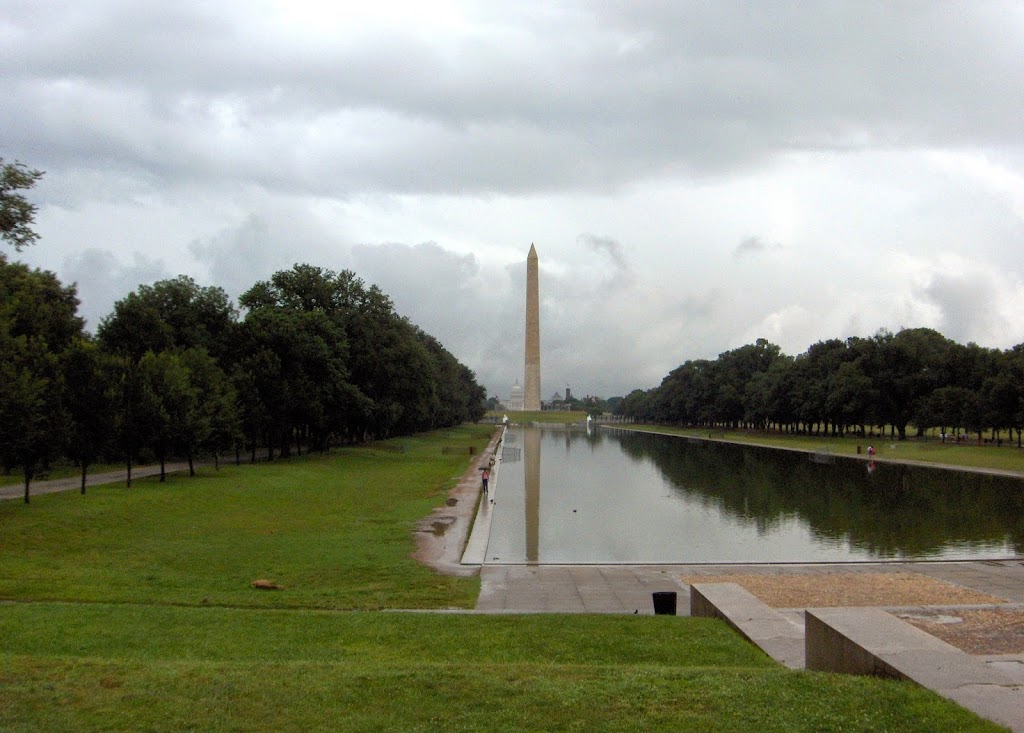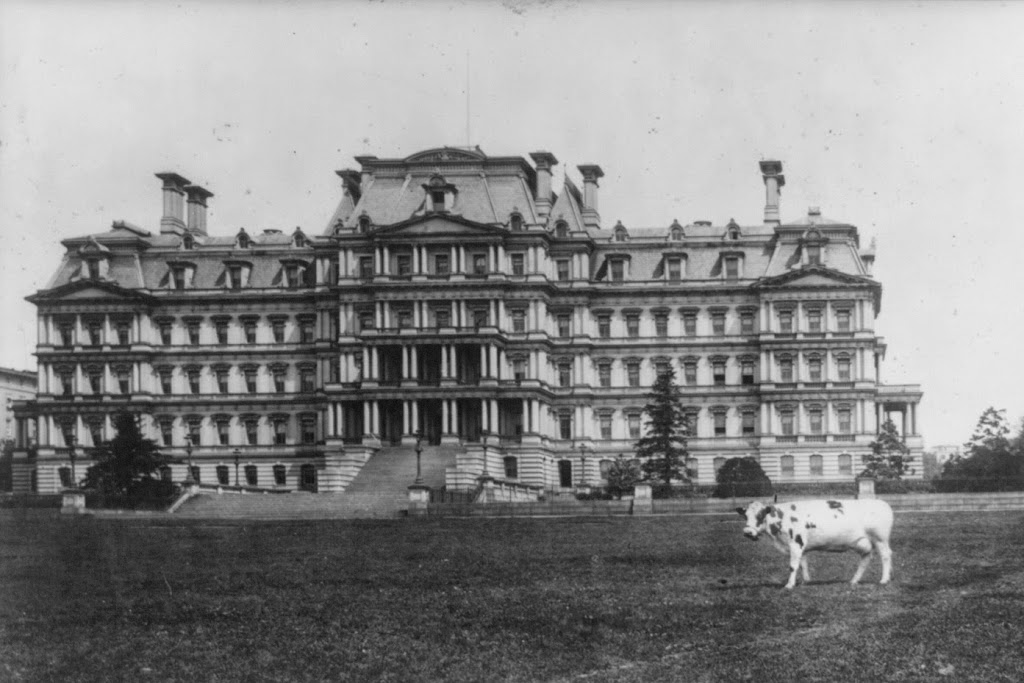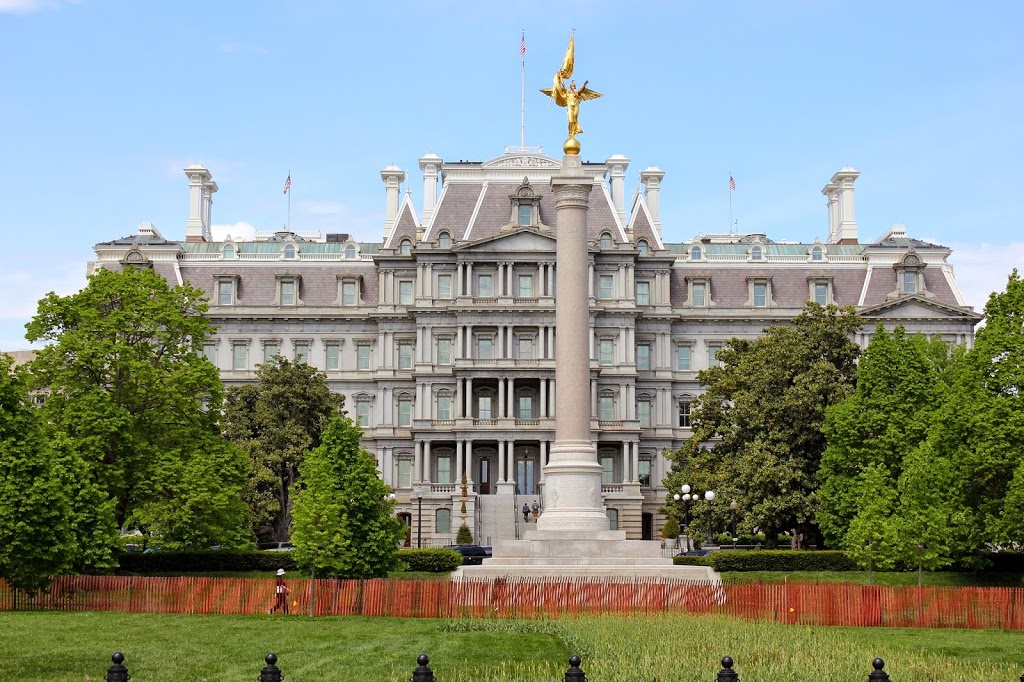President Calvin Coolidge on the South Lawn of the White House in 1925. Image courtesy of the Library of Congress, National Photo Company Collection.
The South Lawn in 2012:
In my previous post on the White House, I mentioned some of the changes that have occurred to the building since it was first occupied by John Adams, so I’m not going to go into great detail about the structure itself. What I do find interesting about these two photos is not the building itself, but rather the people in the photos. President Coolidge is clearly visible in the first photo, but look carefully at the second photo – President and Mrs. Obama are sitting on the second floor balcony, right between the two middle pillars. So, not only do these two photos document changes in the building, in transportation (note the truck to the right of Coolidge, compared to the SUV on the left-hand side of the 2012 photo), and in presidential security (note the lack of Secret Service agents in Coolidge’s photo); they also document two presidents, who served 80 years apart, and who held very different political views, but who nonetheless occupied the same office and the same building.

